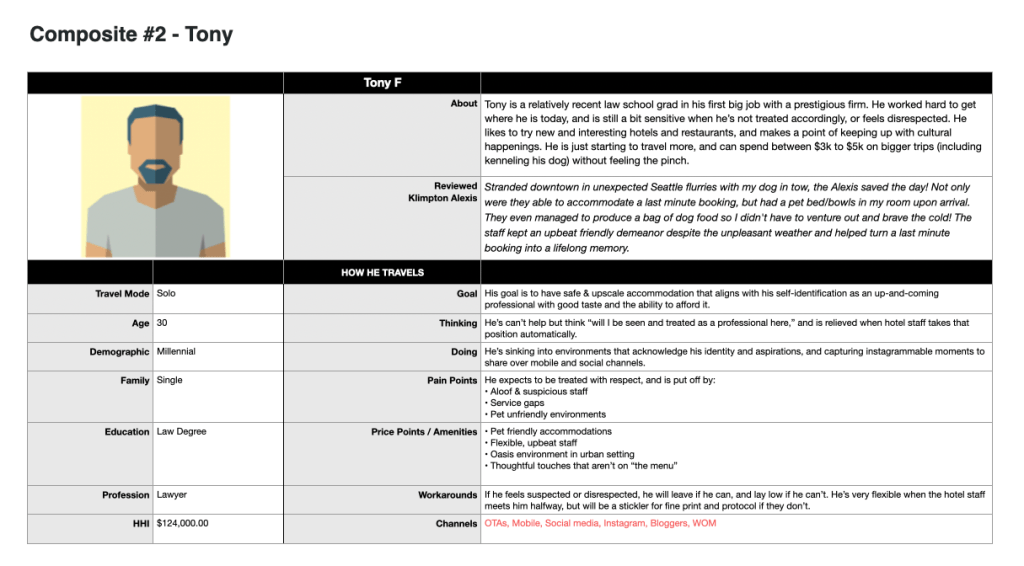As you already know if you read the Gut v Data post, the problem with imagining your target audience as a persona is that, all too often, that persona is limited by your perceptive set.
And as creative as you might be, imagining someone who may be radically different than you, with fundamentally different life experiences and belief systems, is a deeply subjective exercise that robs you of that precious objectivity you need to do this job in the first place.
All to say, IMHO Personas are usually bullshit and you should usually approach them with a skeptical eye. But you don’t have to take my word for it.
“It’s important to remember that your personas should always:
- Be based on actual research, not made up info
- Represent user goals and problems, not biographic or demographic profiles
- Contain insights that are context-specific and task-oriented”
“In order for stakeholders to use personas, they have to believe in them, feel invested, and have ownership over them. The most successful personas are created with involvement from their end users. Otherwise, people will have no understanding of the data behind them and the rigor that went into creating them. Coworkers may think that the UX team just went away and played story time for a few weeks, emerging with these fake people and asking everybody to play along. That is NOT the attitude we want to foster.”
“If you believe that authentic, original, and human content is the best formula to attract an audience who will engage with you, then why would we ask a marketing professional to fake their way forward based on a script aimed at a theoretical personality?”
Target Composites
There is another way to personalize your target audience that gets you most of the way there, all while protecting your objectivity to a much greater degree.
I call them Composites and they are a reality-based approach to building Personas that are more:
- Useful
- Accurate
- Likely to lead to insights
- Harder for your team and client to ignore
Here’s what you do:
- Find similarly situated competitors (in the example below, I researched similar hotels near Seattle’s Pioneer Square, within walking distance of a client’s proposed site)
- I researched TripAdvisor for reviews of those competitors
- I sorted by built-in TripAdvisor demos: Couple, Solo, Business, Etc.
- After sifting through a ton of review, I selected 3 reviews to create a composite group
- I built one composite per review, based on details I could glean from it
- I topped it off by using a key part of each review as a pullquote
Now we have Composites with the following characteristics:
- They’re based on real people
- Who paid for a real competitor’s product
- And had a real experience
- That’s hard(er) for your team and/or client to ignore
The result: reality-based data from exactly the type of customer your client wants, all while maintaining a bit of your precious precious objectivity.
Examples:
My own approach to Composites marries some of demographic content of typical Personas with reality-based data gleaned from online reviews:

I develop 5-10 composites like Tony above, then I pull elements of them all together to create one Marketing Archetype that gives clients and team members a single point of focus at a high level, with the other composites available if they want to dive into the details.
Which they usually do 😉
Here’s the Marketing Archetype from the project that Tony was a part of:
For fast-moving projects, Designer Anthony Tseng offers a simpler role-based approach to composites that’s perfect for UX strategy development:

.
Once you have your Composites done, you’ll have a pretty good idea of who your target audience is and what they’re looking for from the client you’re working with. And once you know all that, you can start on Positioning.
